I love the feeling I get when I fire up my outboard and head for the Chesapeake Bay Bridge Tunnel, the CBBT, on a warm summer morning for a day of fishing. In that moment, the day is full of possibilities. Hopefully, it will include some nice flounder for the dinner table. It will most likely involve battles with bluefish, possibly mixed with some Spanish mackerel. There may be the chance to tangle with a big bull red drum or black drum, or at least a feisty fight with some puppy drum. And, there’s always the chance of a tug-of-war with a stubborn sheepshead. The list goes on and on for so long—cobia, spadefish, weakfish, stripers and more—that one article cannot contain all the possibilities. When you go fishing at the CBBT during the summer months all bets are off (be sure to sign up for the FishTalk fishing reports to hear about the latest bites throughout Chesapeake country every Friday by noon via email), and just about any fish found in the Chesapeake Bay or inshore Atlantic waters are a possibility. So for now, let’s focus on three top contenders: flounder, drum, and sheepshead.
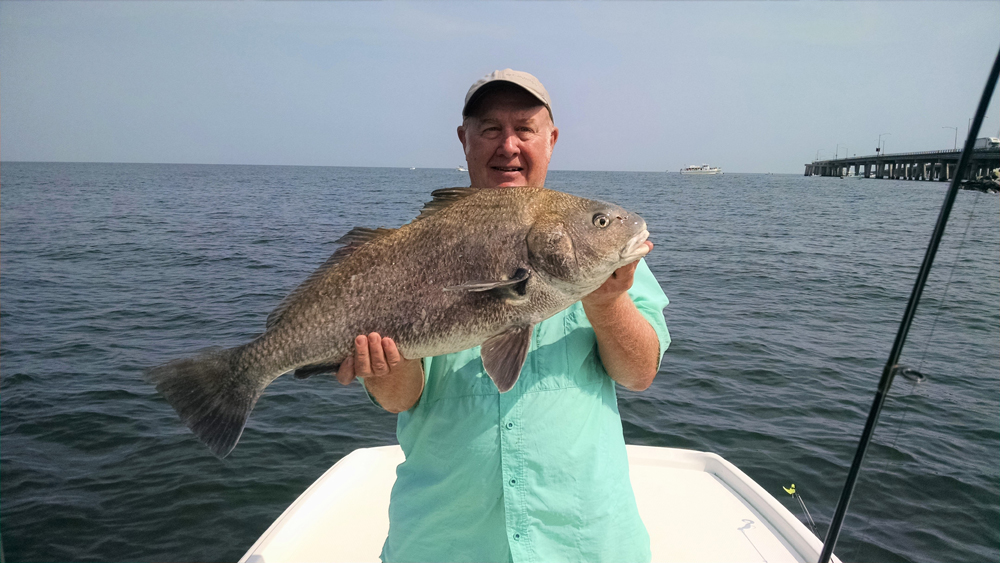
Flounder Fishing at the CBBT
Let’s begin with flounder. Last year I determined to really learn to jig for flounder. Oh, I’ve caught plenty of flounder on jigs, but they were usually a by-catch while fishing for other species. When it came to flounder, my old method was the stand-by: to drift cut or live bait on a bottom rig. But, I discovered that flounder will hit a jig when they won’t even look at anything else.
Often last summer, I was pulling in fluke while drifters around me were coming up empty. I tried to avoid eye contact with those frustrated anglers. And, it’s not just my imagination. I watched a Youtube video recently showing underwater footage of a typical flounder rig with cut bait being fished alongside of a jig. It was amazing (go to YouTube and search “underwater flounder bait vs jigs,” and it will pop right up). The flounder would look at the cut bait, then attack the jig repeatedly. I experienced similar results when I fished a conventional flounder rig and a jig at the same time. I would catch some fish on the standard bottom rig, but consistently catch more on the jig. I became a believer.
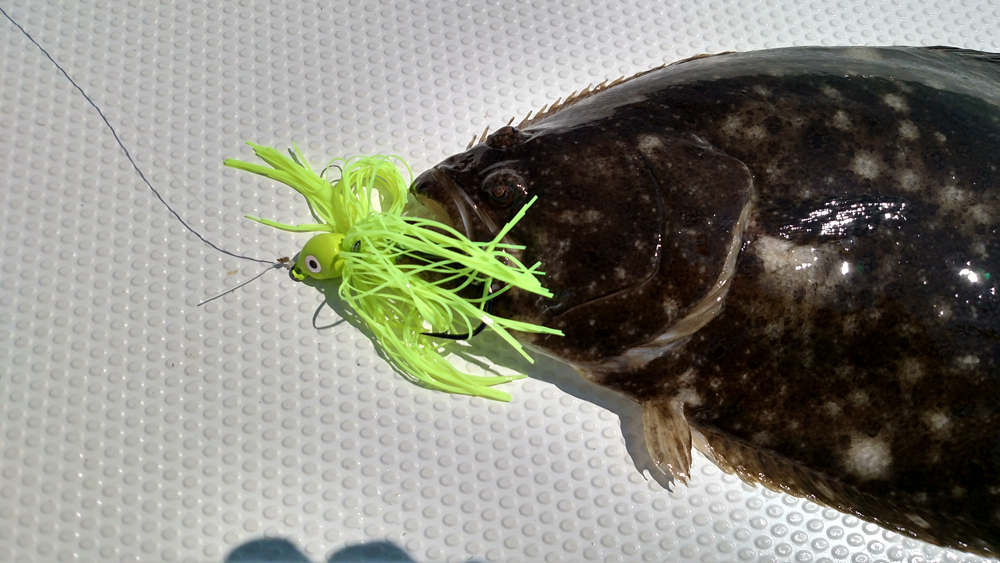
The jigs that scored for me are from Backwater Baits out of Oceanside, NY. No, this isn’t a cheap plug for a friend. I only know him from ordering his stuff, and his jigs work. They come in multiple sizes and many colors. He has two types, one is a “Spro” type he calls an “ultra-minnow”, the other he calls a “poison tail”. I’ve caught my share of fish on both. They are designed to be tipped with Gulp Minnow. But when small bluefish are making quick work of the Gulps, I switch to a strip bait on the jig. Both work well.
As far as the “where-to” goes, I like two spots. One is along the ocean side of the first island (south island), near the tube end. This has always been a productive place for me. The fish are never real thick there, but I usually pick up a few. The other location is along the pilings leading up to the first island. The fish hang out in the rubble found in that area. People also fish the pilings past the second island, but I always catch way more oyster toads than flounders there. My two locations call for slightly different techniques. I fish the side of the island when the current is moving, drifting with the current while slowly jigging along the bottom. I slowly raising the bait about a foot off the bottom, and drop it. The fish will usually hit it when it is off the bottom.
When fishing the bridge pilings, I keep the boat just up current of a piling and drop the jig down. Again, slowly raising and lowering the bait is all you need to do. The currents can run very strong here, so this can get tricky when fishing alone. I have one hand on the rod, and the other on the boat's controls. I keep the bait just in front of the piling, sliding down the bridge from piling to piling while maintaining a distance far enough to keep the jig on bottom but near the piling. Don’t drag the bait along the bottom or it will get snagged. Once the fish bites, I give him a moment to get the jig in his mouth then start reeling.
See How to Fish for Flounder in DelMarVa Bays and Inlets, for more info on chasing after flatfish in the Mid-Atlantic region's coastal bays and inlets. Different areas require different techniques, and what we've discussed here is fairly specific to the CBBT. In other areas you'll want to change the tactics accordingly.
Red and Black Drum Fishing at the CBBT
When you’ve got your limit of flounder, it’s time to look for drum. Both red and black drum swim along the sides of the islands during the summer. There is a place along the side of the second island where I usually start. Look for a pile of rubble rising from 20' to 10'. I have caught reds there from 25" to 44" on jigs. I have also caught black drum there in the same size range. The key, particularly for the reds, is moving water. Jig size and color don’t seem to make much difference. The largest red I have caught (about 50 pounds) was on a half-ounce jig with a four-inch Gulp Swimming Mullet. Elephants do eat peanuts.
If you don’t find the fish immediately, drift down the side of the island staying 30 feet from the rocks. Keep one eye on the fish finder. There will be many marks since spadefish, triggerfish, small sea bass, and blues inhabit the same area. The distinct marks of the larger fish will stand out from the others. Both types of drum often swim around in schools a few feet from the surface. At times it is easy to spot the school, so keep your other eye on the water.
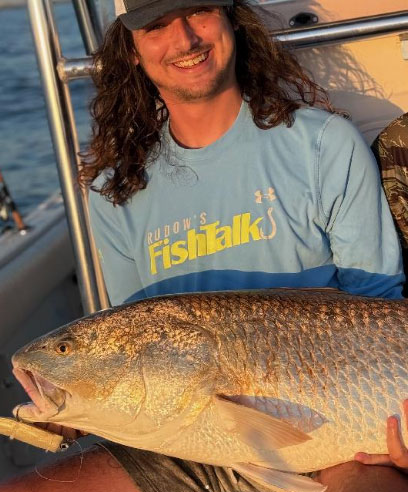
Side-scan can be extremely helpful in locating these fish, and lets you "look" at broad areas of water while motoring around. After locating a school, real-time imagers (like Live Scope) can assist in watching the fish's reactions and keeping track of where your lure is. But do all your searching with stealth. By the time summer arrives there will often be large numbers of boats pressuring these fish and they can get very spooky. At times, cast after cast will go ignored even when you can spot the fish and you know your lure is passing right by them.
If you’re marking fish but not getting bites, try a live bait. I always put a few spot or croakers in the live well first thing in the morning. Either will work for red drum, or for the odd cobia that swims by.
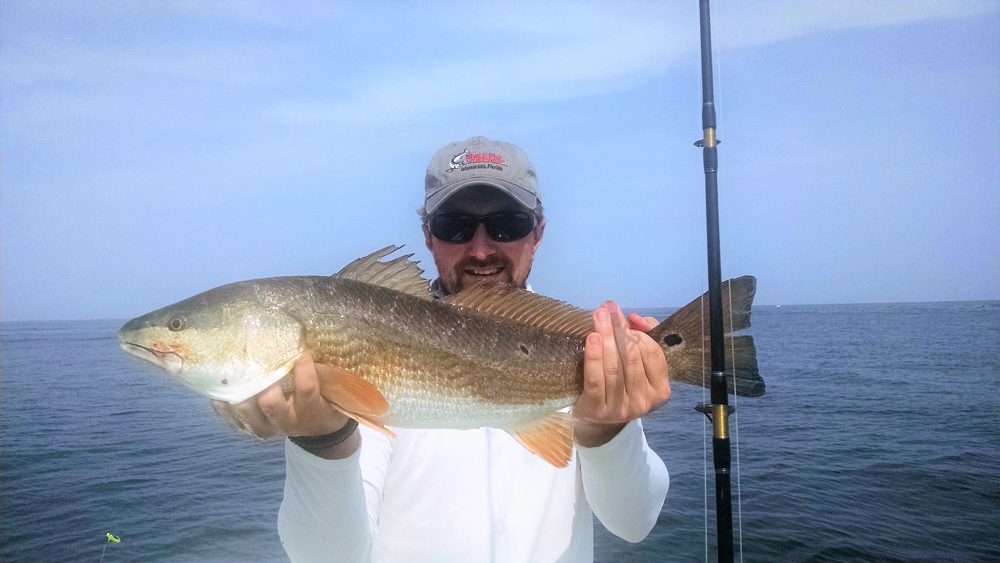
I use light spinning tackle when jigging for drum. Once I hook a big one, I settle in for the ride. The key is to keep constant pressure on the fish without trying to horse him in. I was out with my step-son Justin when he hooked into a big red a few years ago. He had it to the surface a couple of times–just long enough for me to see that it was a monster fish. We chased it around for about 45 minutes. The fish headed for the pilings, so he tried “feathering” the reel. He put on a little too much pressure, and broke him off. A little bit of his heart broke off too. It happens. It takes patience, along with light and constant pressure, to bring these fish to the boat.
Sheepshead Fishing at the CBBT
Once the current goes slack, it is time to hunt for sheepshead. They hover above the rocks covering the tunnel tubes and around pilings, nibbling on barnacles. You must put the bait right in their face. This is easier to do when the current isn’t running. Fishing the pilings is popular with the kayak crowd. This is one time the yakkers have the advantage. They can position themselves alongside of a piling and drop the bait straight down. The key is to keep the bait close to the piling. The bait usually consists of pieces of blue crab or fiddlers. The typical rig has a couple of hooks on dropper loops above a sinker.
Sheeps move in small pods from just under the surface down to the bottom. If you catch one try again on the same piling at the same depth. These are powerful fish which require stouter equipment to muscle the fish away from the bridge. If one wraps you around the piling, you can kiss that fish goodbye.
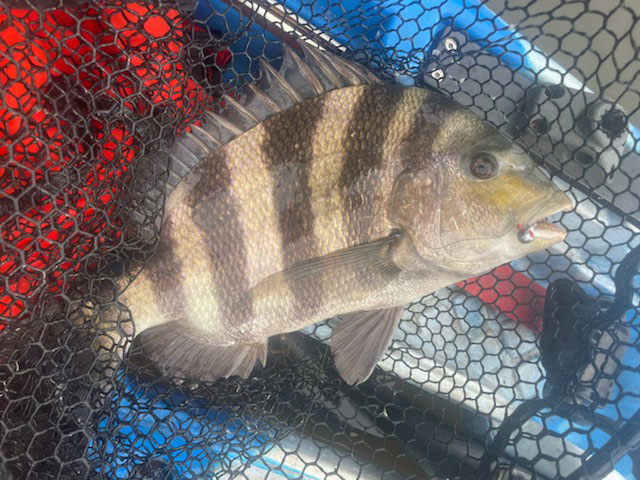
We’re spoiled with multiple choices and great fishing at the CBBT in the warm months. These are just a few of the favorites—and by keeping your options open, you’re sure to come home with some filets or pictures to remember the day.
- By Chuck Harrison. Chuck and his wife Peggy live in Newport News, Va. He fishes the lower Chesapeake Bay on his 16 foot Mako, as well as the surf in the Outer Banks and the Atlantic Ocean. He is a long-time writer of fishing articles, and former charter boat mate. His real job is as a consultant with churches.
Editor's note: this article was originally published in August of 2017 and was last updated in July of 2024.